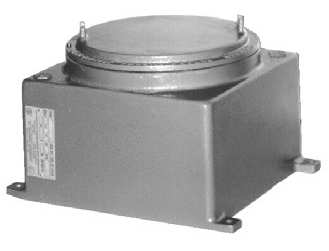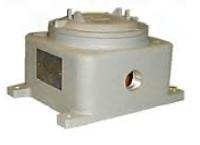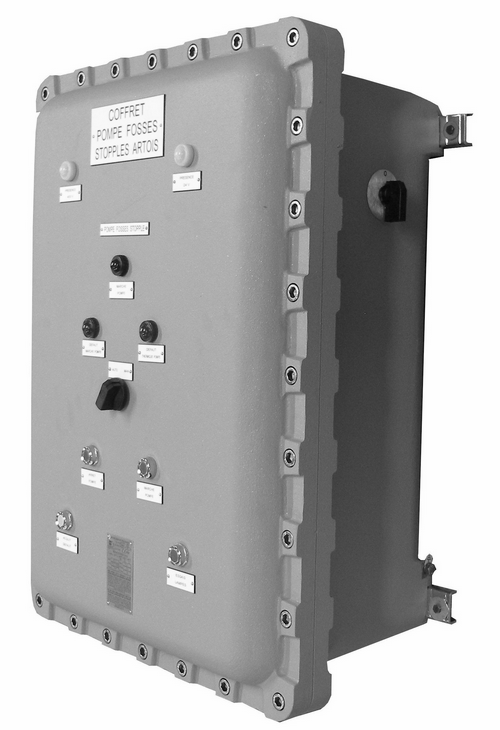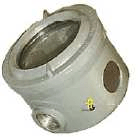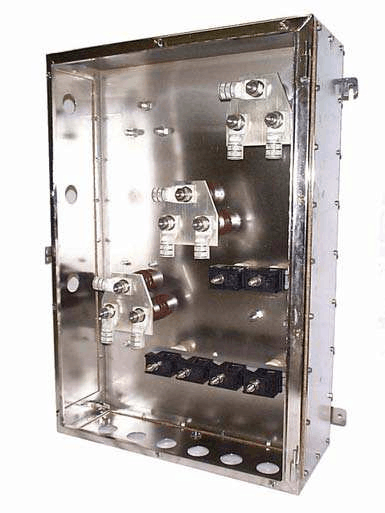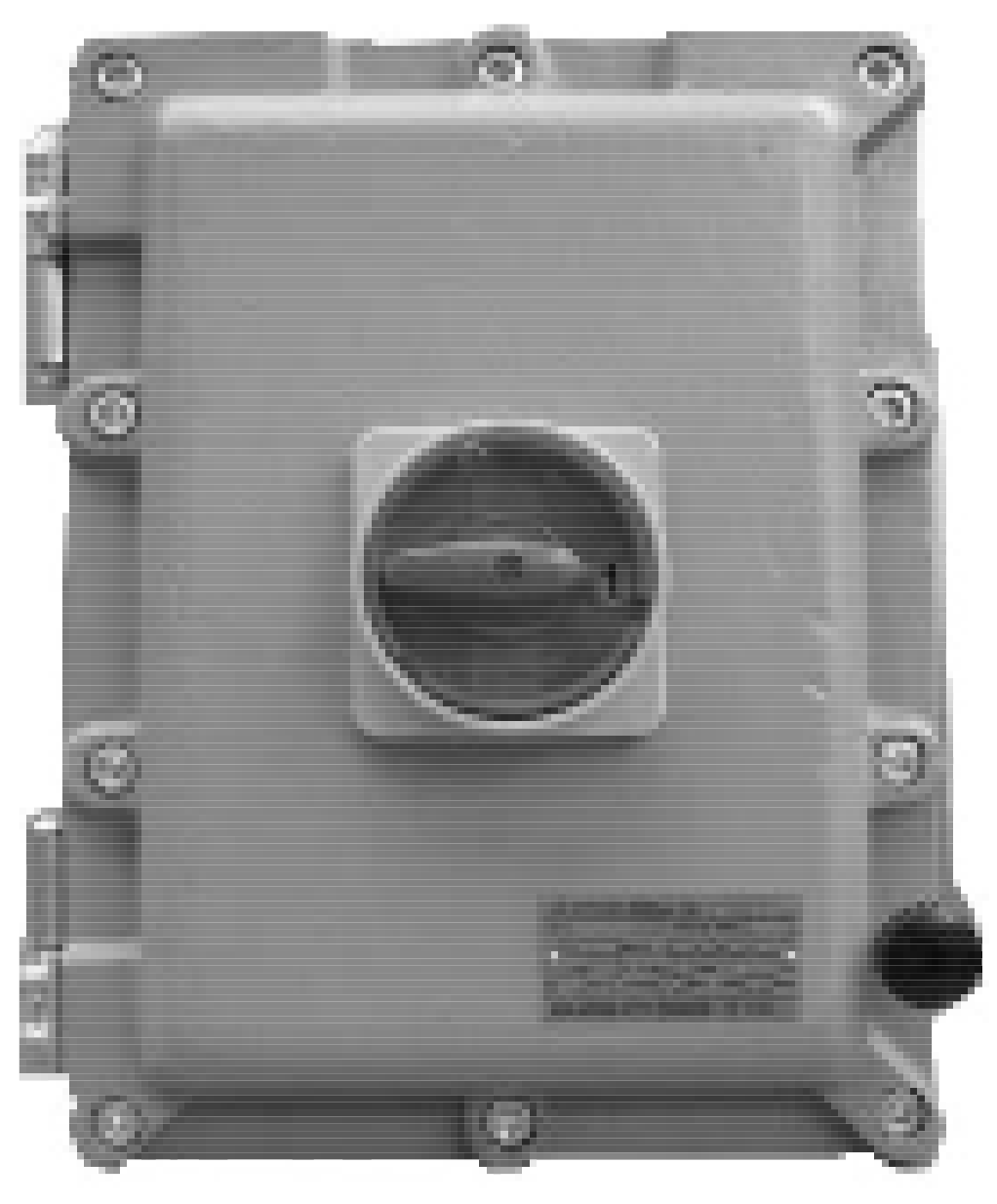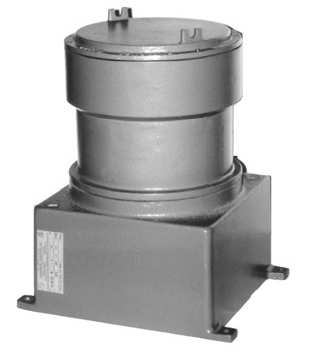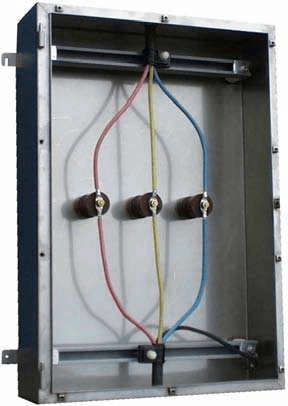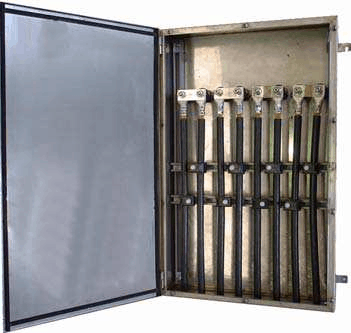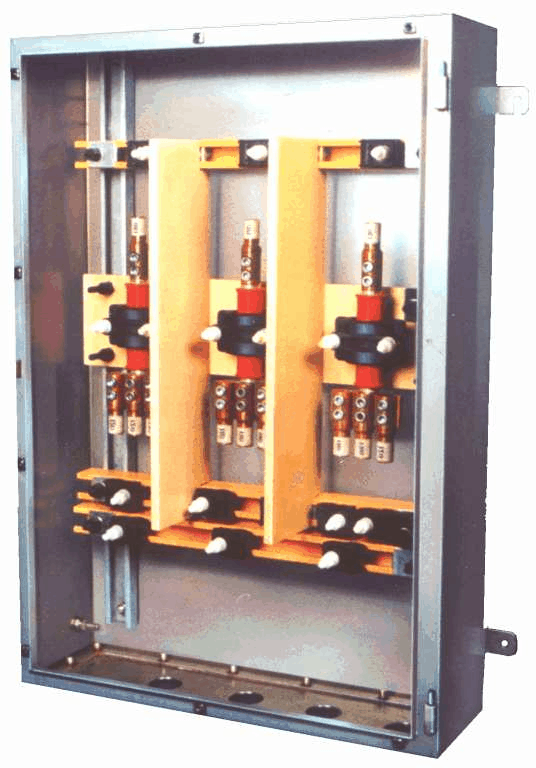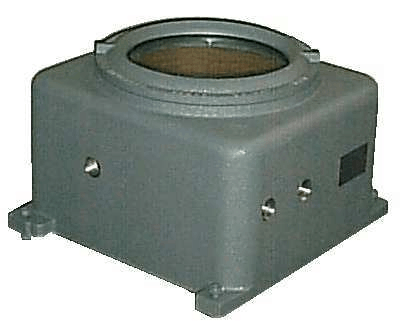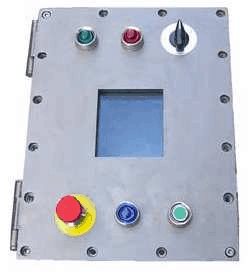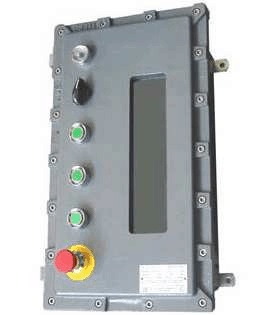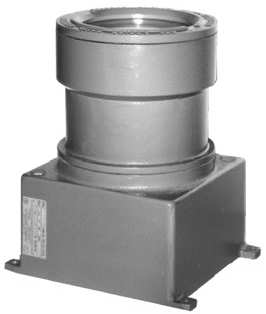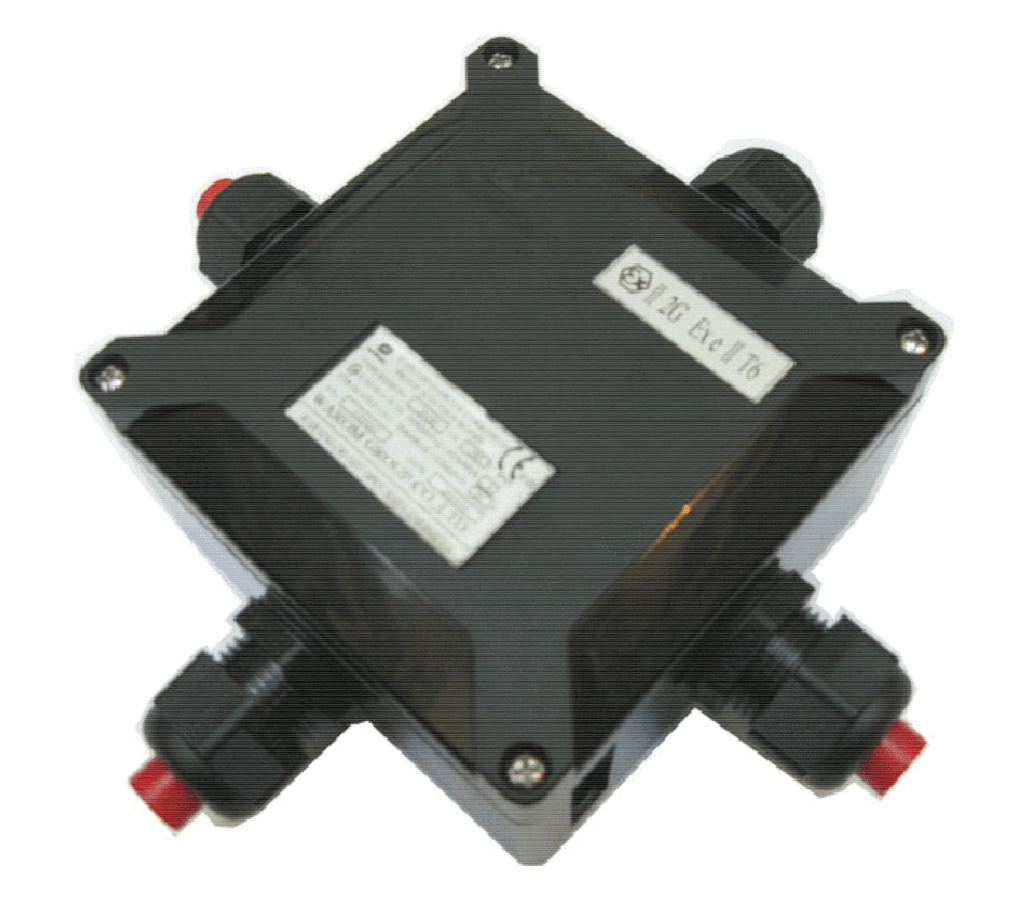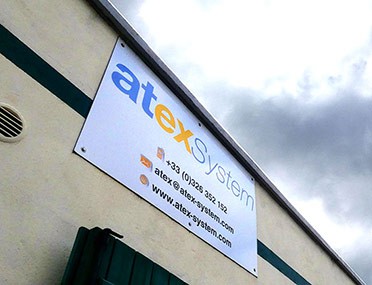Enclosures for Hazardous Locations – “Ex”
Where there is a possibility of the surrounding atmosphere being
“potentially explosive”, the location is described as “hazardous”
and requires special protection measures in the construction and
testing of the installed equipment. The basic principal employed is that the “will not cause an explosion of the surrounding atmosphere”.
There are two types of enclosures are known as “Explosionproof” or “Flameproof” and “Increased Safety” protection types.
“Flameproof Ex d” equipment is designed and marked in accordance with IEC (EN) 60079-1, for example Ex d IIB+H2 T5.
“Incerase Safety Ex e” equipment is equipment is designed and marked in accordance with IEC (EN) 60079-7, for example Ex e IIC T6
Flameproof Ex d enclosures
The primary function of an Ex d enclosure is to prevent an internal explosion from spreading. An Ex d enclosure is designed to mechanically withstand an internal explosion.
The design of the enclosure – and in particular of the flameproof path or ignition gap – prevents the spread of sparks, flames and quenches hot gases so that any explosive atmosphere surrounding the device is not ignited. In addition, the enclosure protects the fitted equipment against environmental influences dust or water.
Ex d Enclosures are Flameproof encapsulated housings made of aluminum or stainless steel and designed for the installation of components without Ex approval. The flameproof enclosures can contain a wide variety of conventional electrical and optical equipment; Power supply, Electrical measurement devices, Amplifiers, Optical Fiber converters, Isolation controller, Programmable logic controller, Power converter, Signal converter (analogic/digital), Relays, Anti-condensation heaters, Variable speed drives, Physical & Chemical measurement devices for fluids /solids and gases, Devices for motor starting and inversion of motor rotation, Ignition devices, Photoelectric cells, Hubs for Bus networks, Analogic / digital displays, Magneto-thermal switches, Breakers, Capacitive and Inductive proximity sensors, Differential switches, RFID Reader/ Scanner devices, Diodes bridge, Fuses, Remote control switches, Thermostats, Transformers, etc…
Enclosures can be equipped with cable glands or bushings, knobs, lights, switches, dials, windows and radio and WiFi antennas.
A wide range of sizes and shapes offers the right enclosure for every application.
Multiple enclosures can be assembled to form flameproof panels.
Each of our enclosures is subject to routine overpressure test with pressure applied varying between 10 and 18 bar depending on the enclosure internal volume. It is part of our quality procedures to check that ignition protection gap in Ex d enclosures is not damaged during the assembly and wiring process.
For special applications such as nuclear power plants we provide certification according to EN 60068-3-3 and EN 60068-2-57 seismic standards and manufacture enclosures according to CRT 91 C 112 00, CRT 80 C 012 00, CCTR-91.C.031.05 EDF specifications.
Increased safety enclosures Ex e
The Ex e marking corresponds to a method of protection applied to electrical equipment in which additional measures are applied to provide increased safety against the possibility of excessive temperatures and the appearance of electric arcs or sparks in normal service. Enclosures of type of protection Ex e must provide at least a degree of protection IP54 as well as impact resistance.
This type of protection is often applied for junction boxes and control stations (pushbuttons, indicator lights, switches, ammeters, etc.).
These enclosures are available in GRP, Aluminum or even stainless steel. They are dimensioned to measure according to your specifications according to the ambient temperature, the number of terminals as well as the size and nature of the cables. Ex e cable glands can be plastic or metal for unarmed cables, and only metal for armed cables.


